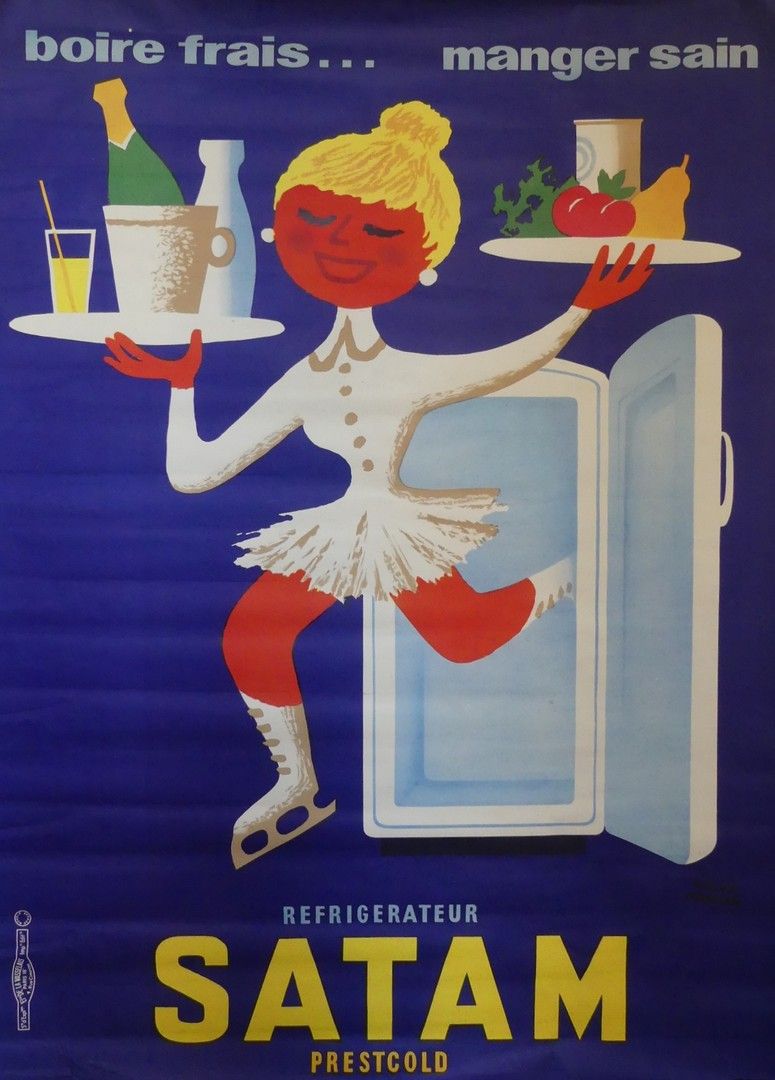Description
MORVAN Hervé (1917-1980)
SATAM-PRESTCOLD REFRIGERATOR "DRINK FRESH...EAT HEALTHY". Circa 1958 Établissements de La Vasselais, Paris (offset) - 160 x 118 cm - Uncoated, fair condition (writing, foxing, tears and creases) Bibliography: "Morvan Affichiste", Bibliothèque Forney, no. 327.
You may also like
